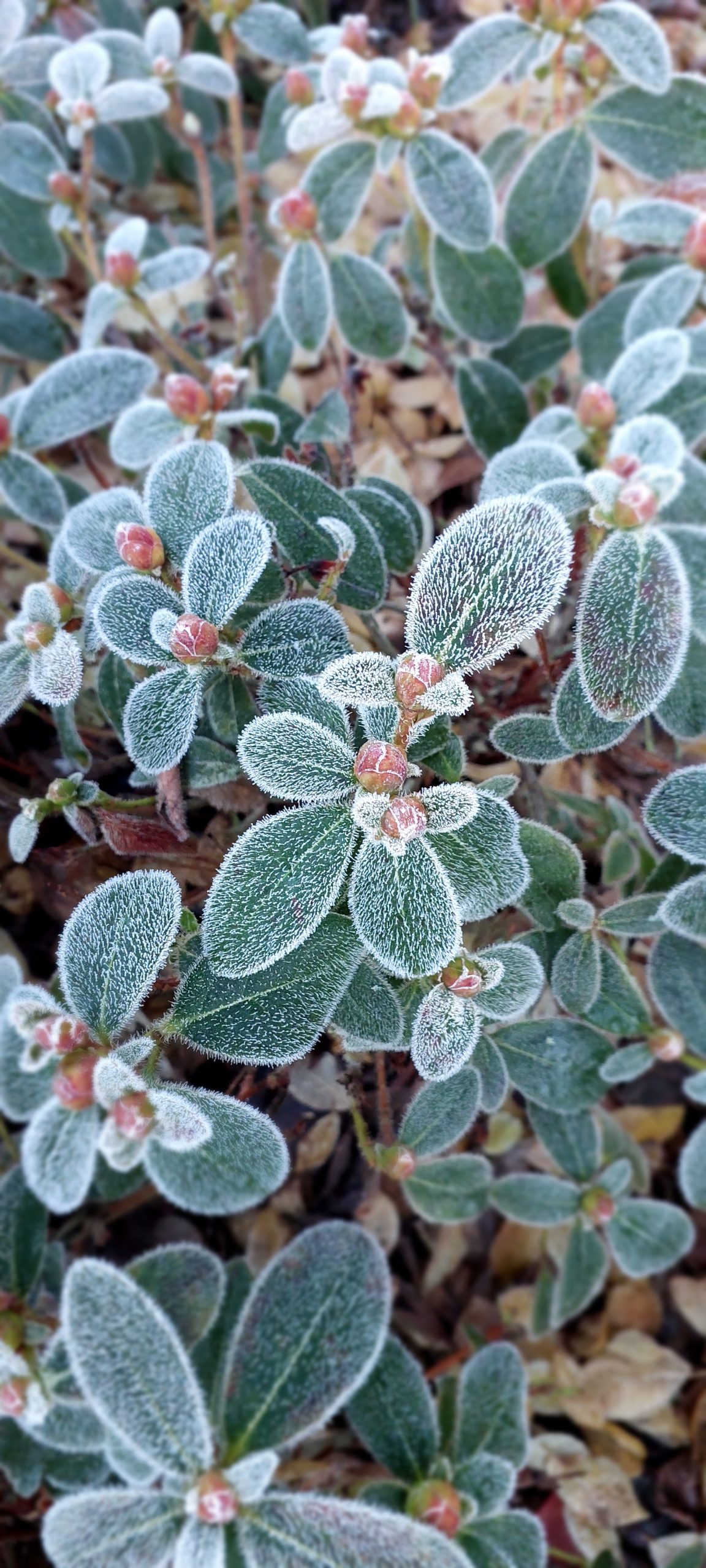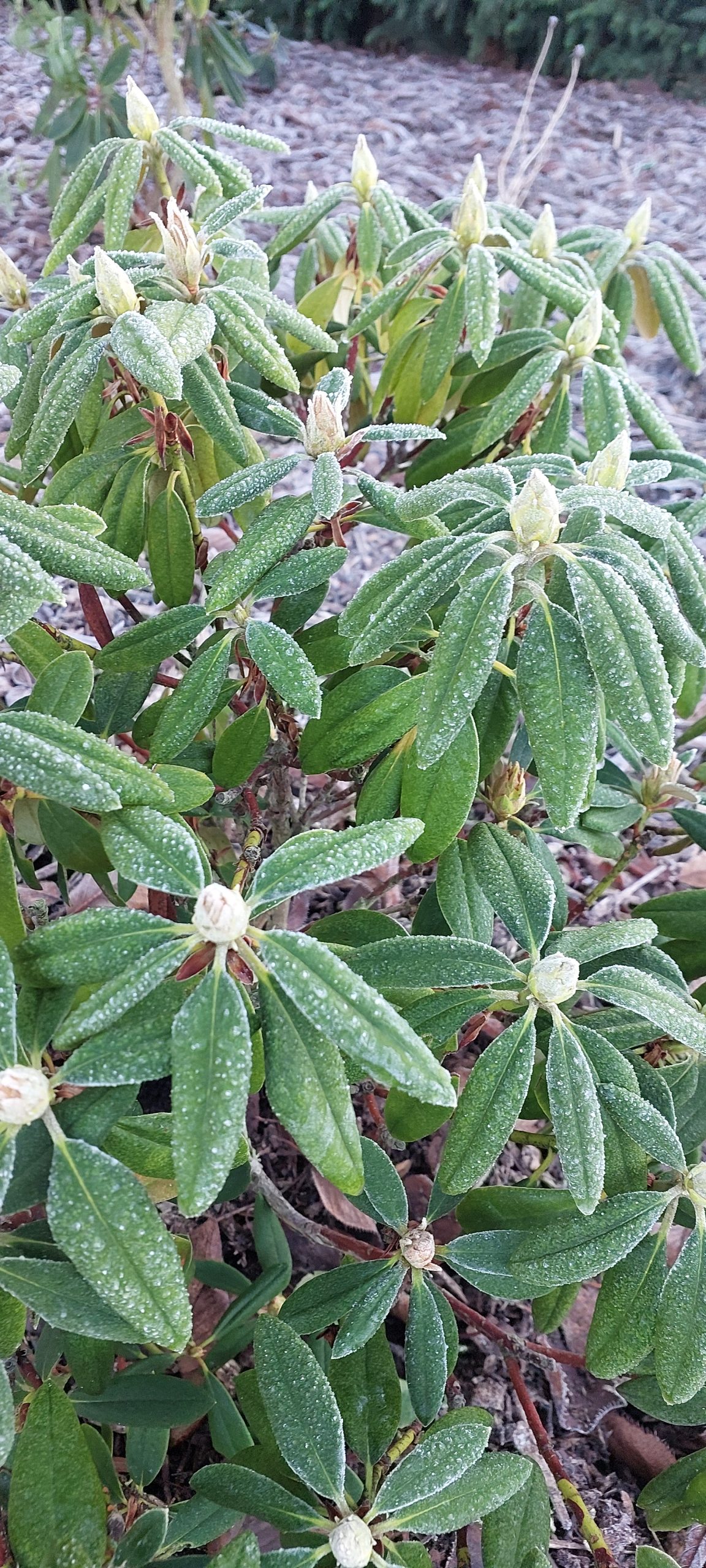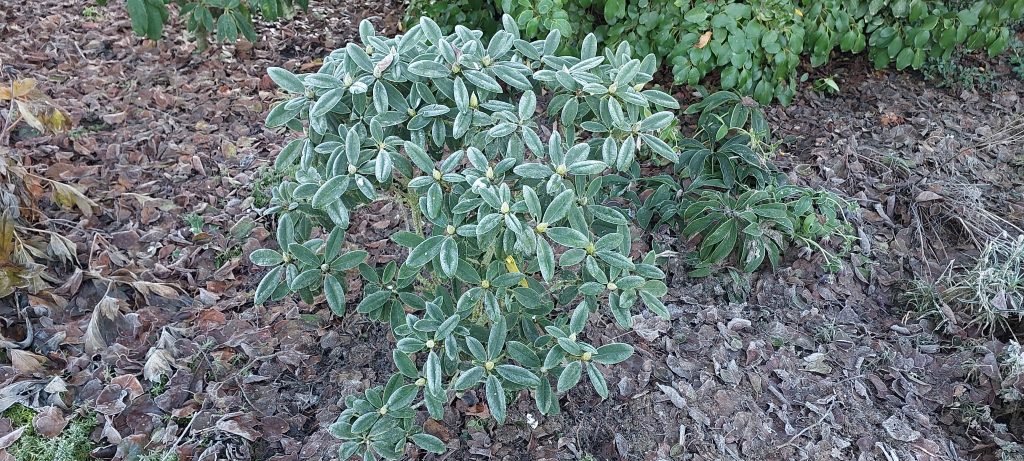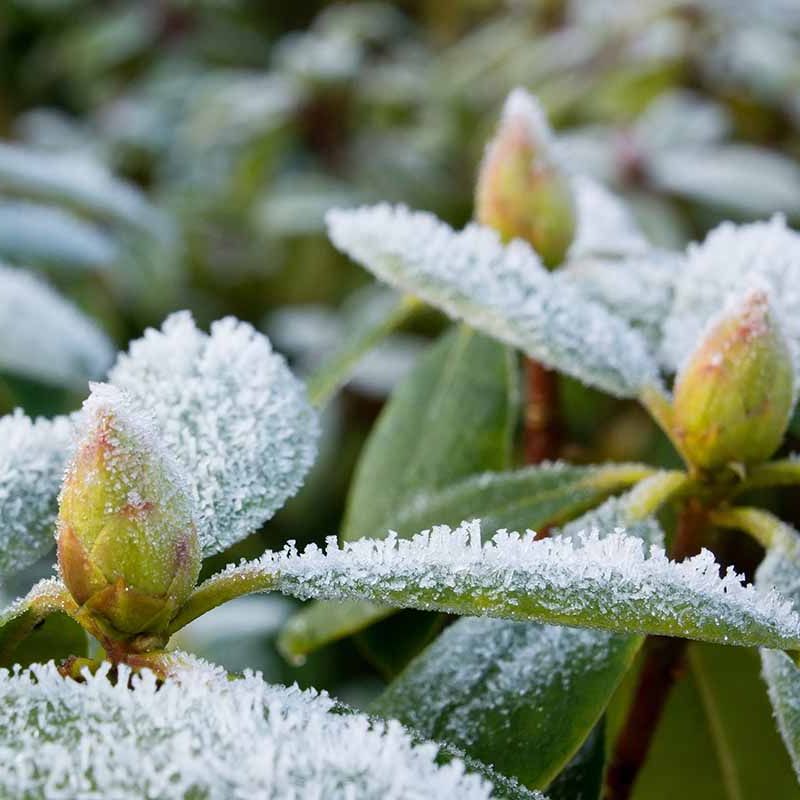



When it comes to winter, some plants hunker down and hope for the best — but not rhododendrons. These hardy shrubs have evolved with some clever cold-weather coping strategies that make them true connoisseurs of chilly conditions.
You’ve probably noticed the droop. Rhododendron leaves curl and hang in the cold — and it’s not out of misery! This movement reduces moisture loss, eases stress on the roots, and even creates a cosy layer of insulation around the stems. It’s a bit like pulling your scarf tight and waiting for the kettle to boil.
Snow, too, plays its part. When it lands, it tends to break apart on contact with the pointy flower buds and slides harmlessly off the foliage. It’s nature’s way of avoiding damage from heavy buildup — clever, right?
But here’s the real showstopper: frost deepens flower colour. The colder the climate, the more vibrant the blooms. That’s why rhododendrons in Southland display those sought-after true blues, while the same varieties here in Canterbury lean more toward mauve and soft purples. Up in the warmer north, growers have noticed their blooms becoming paler over time as winters warm — a quiet reminder that climate does shape colour.
And yes, to settle a common nursery question: rhododendrons love frost. Many hail from the Himalayan foothills, where snow and ice are the norm. Cold air not only enriches their colours but also gives your garden a natural pest cleanse. A decent frost knocks back bugs in a way no spray ever quite manages.
That said, not every rhododendron enjoys a chill. Most fragrant varieties are frost-tender and best kept under eaves or tucked into sheltered garden corners. The perfume is divine — but like a fine liqueur, it’s best stored with care.
